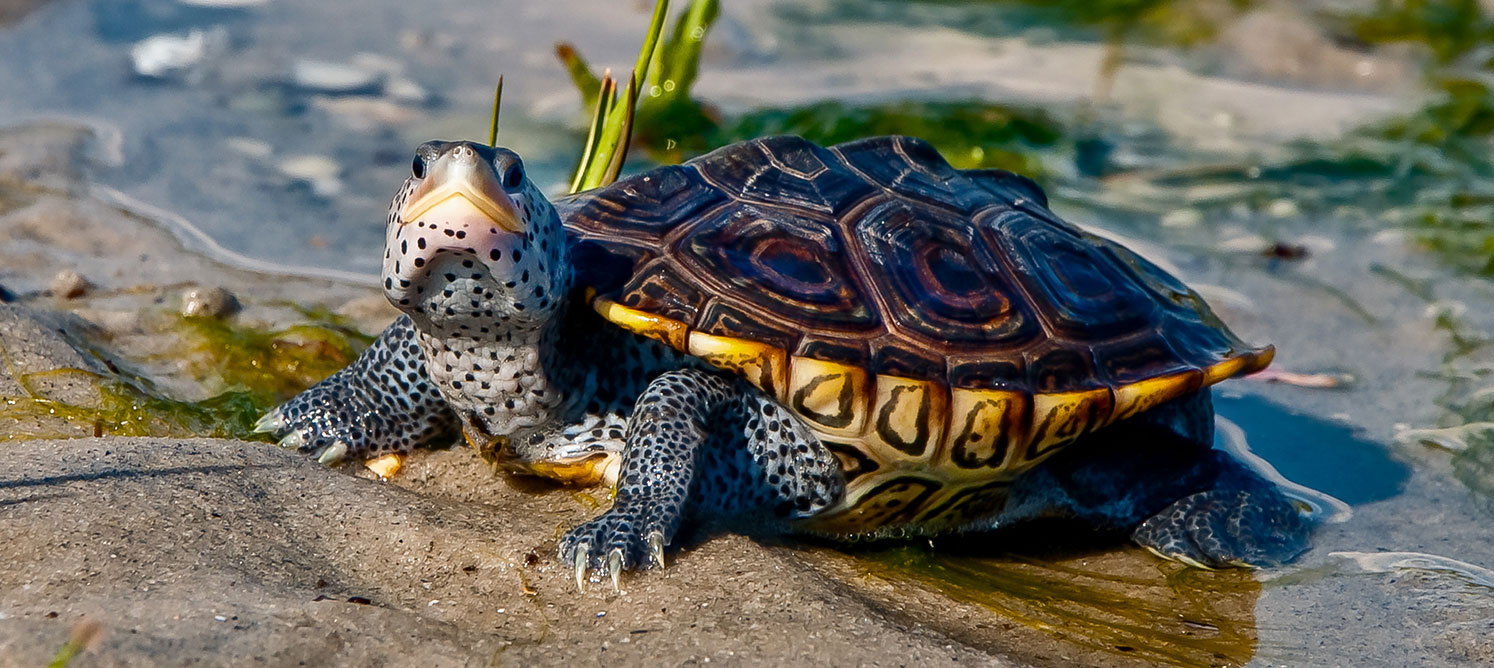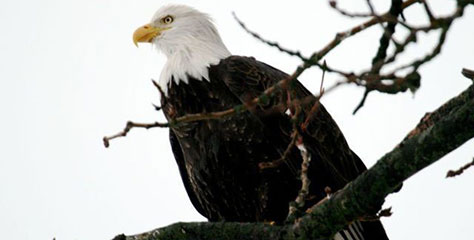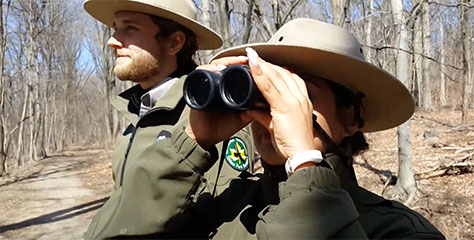Turtles in New York City Parks
NYC is famous for its frenetic, fast-paced lifestyle, but the city’s turtles know you can also get ahead by taking it slow. Spend a New York minute (or New York several minutes) with some of the city’s slowest moving residents.

Turtles can be found throughout the city; any park with water bodies is likely to have a healthy aquatic turtle population. Central Park, Prospect Park, Van Cortlandt Park, and Alley Pond Park are a few turtle hotspots. It depends on the species, but turtles generally live long lives, taking 5 to 20 years to reach sexual maturity, with many of the common species in NYC living for up to 30 years.
Please do not dump unwanted pet turtles in our parks. They likely wouldn't survive adjusting to the wild and they can harm the ecosystem. Find resources to help keep them safe.
Turtle Season
Turtles are year-round city dwellers. Like many New Yorkers, they spend the summer months soaking up as much sunshine as they can. Turtles are cold-blooded, so they depend on the environment to maintain their body temperature. Sunbathing is how they warm themselves up — and it’s relaxing too. Sometimes, you might see turtles stack on top of each other on a rock; that's just their way of finding space to bask in the sun. In the winter, their metabolism slows down and they enter a state of sleep called brumation. This is similar to hibernation in warm-blooded animals. Turtles will then brumate in the muddy bottom of lakes and ponds or in underground burrows dug in soft soil.
What to do if you see a turtle?
Aquatic turtles, especially snapping turtles and diamondback terrapins, leave our water bodies in the spring and summer to lay eggs. Aquatic turtles will look for areas where the ground is soft so they can dig and lay their eggs. This can include grassy areas as well as exposed soil. If you happen to see one, please leave it be. It's likely out and about to find a good nesting spot. Taking it back to the water might harm it or extend its trip even more!
Meet the Turtles
According to the Department of Environmental Conservation, New York State is home to 19 turtle species. Some are aquatic (meaning they mostly live in our lakes, ponds, and rivers) and some are terrestrial (living mostly on land).
Explore some of the turtles most commonly found in our parks:
Painted Turtles -
Chrysemys picta
Painted turtles can be recognized by their bright yellow and red markings and flat, dark shells. Frequently seen in parks, painted turtles are often basking on rocks, logs, and the shores of freshwater ponds and lakes throughout the city, especially Turtle Pond in Central Park and Spring Pond in Blue Heron Park. Painted turtles eat aquatic vegetation and can actually sleep underwater for a few hours before surfacing for air – talk about a deep sleep!
Snapping Turtles -
Chelydra serpentina
Snapping turtles are the official reptile of New York state and one of the largest freshwater turtles in North America. They can grow up to 18 inches long and weigh up to 45 pounds.
Snapping turtles spend most of their time in and around ponds, lakes, and other water bodies. They prefer muddy waters where they can hide and surprise their prey, like small fish and other vertebrates, more easily. In the winter, they can even remain underwater for months without surfacing for air by absorbing oxygen from the water through their skin through an organ called the cloaca.
You are most likely to see snapping turtles starting in June, as females leave the water and venture out to find a nesting site to lay their eggs.
They don’t call them “snapping” turtles for nothing! These turtles will bite if they feel threatened, so be sure to keep your distance.
Red-eared Sliders -
Trachemys scripta elegans
Red-eared sliders are recognizable for the bright red markings often found on the sides of their heads. Like other freshwater turtles, they spend most of their time in the water, but emerge to bask in the sunshine.
Red-eared sliders were likely introduced to parks by people releasing their unwanted pets. Introduced species like red-eared sliders can harm native species by outcompeting them and consuming food sources that native species depend on to survive. Please do not release animals in parks, as they can harm the local ecosystem and native wildlife.
Diamondback Terrapins -
Malaclemys terrapin
Diamondback terrapins are so named for the diamond-shaped markings on top of their shell.
Diamondback terrapins are found in wetland areas with brackish water (water bodies formed where saltwater and freshwater meet), such as Idlewild Park in Queens. They are the only turtle species in North America that lives in brackish water.
In the winter, they nestle into the mudflats of their home range and go into torpor, a state of decreased physiologic activity, to conserve energy.
Eastern Box Turtles -
Terrapene carolina carolina
Unlike the other turtles on this list, box turtles actually spend most of their time on land, rather than in the water. They can be found wandering through forests and open fields. When they get too hot in the summer they will hide under decaying logs or leaves, use other mammal burrows, or find shallow puddles and pools to cool off in.
They have a distinctive, high-domed shell shape. The structure of its shell allows box turtles to almost completely close themselves up inside.
How You Can Help Turtles Thrive
-
Let them be! It is always best to leave turtles where you found them, unless they are in immediate danger, such as trying to cross a busy roadway. Female turtles will travel a distance away from lakes and ponds to lay their eggs.
-
Help us maintain a clean park. Dispose of litter properly, both at home and when visiting parks. Garbage can be mistaken for food, and sometimes wildlife can become entangled in it.
-
Stay alert while driving. Many turtles are killed each year while crossing roadways to nest. Help protect them by driving with caution.
-
Don’t release pets! NYC Parks works to maintain healthy ecosystems in our parks. Wildlife populations will generally self-regulate according to habitat availability. Everyone can assist by not releasing animals in parks. Released pets may harm the ecosystem and may also not survive in the wild.
-
No feeding! For everyone’s safety, we kindly ask that park patrons refrain from feeding any wildlife — including turtles. Wildlife are capable of finding their own healthy meals, and feeding can condition them to approach people for food.
-
Volunteer! Any volunteer cleanup or habitat restoration project will improve environmental conditions and support turtles. Visit our Volunteer Opportunities page to find upcoming volunteer events in our parks.
Wildlife in New York City
Discover which wildlife live in our city and find fun wildlife activities to learn more!
Wildlife Calendar
Use our wildlife calendar to learn about wildlife behavior by the month and where they thrive in our city.
Wildlife Programs
Join our Urban Park Rangers and friends as we head into the park to see and learn about wildlife.








